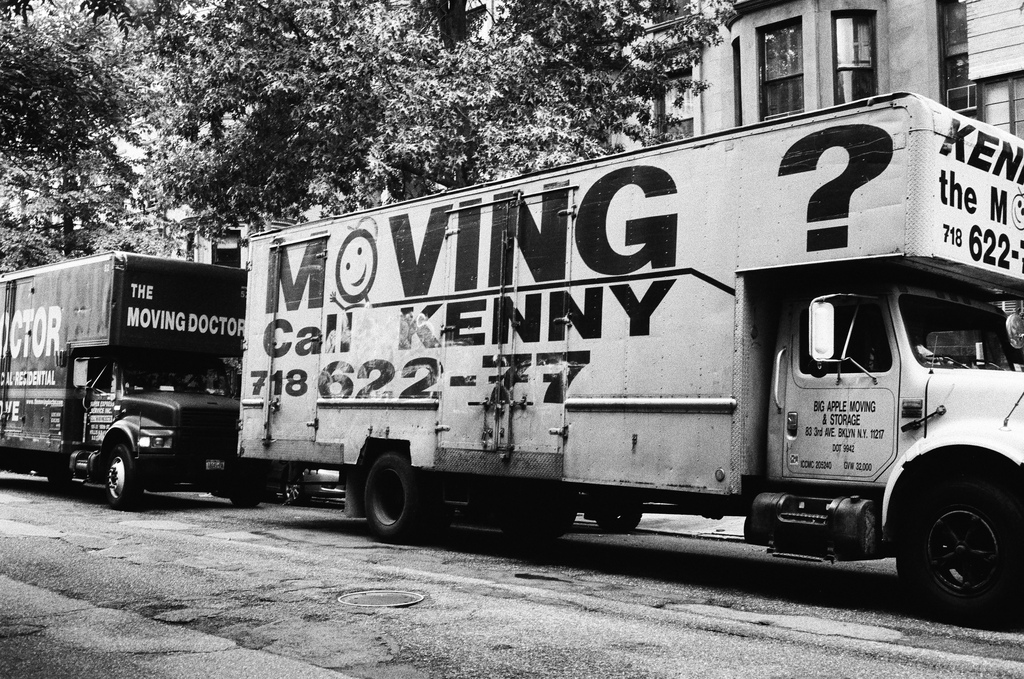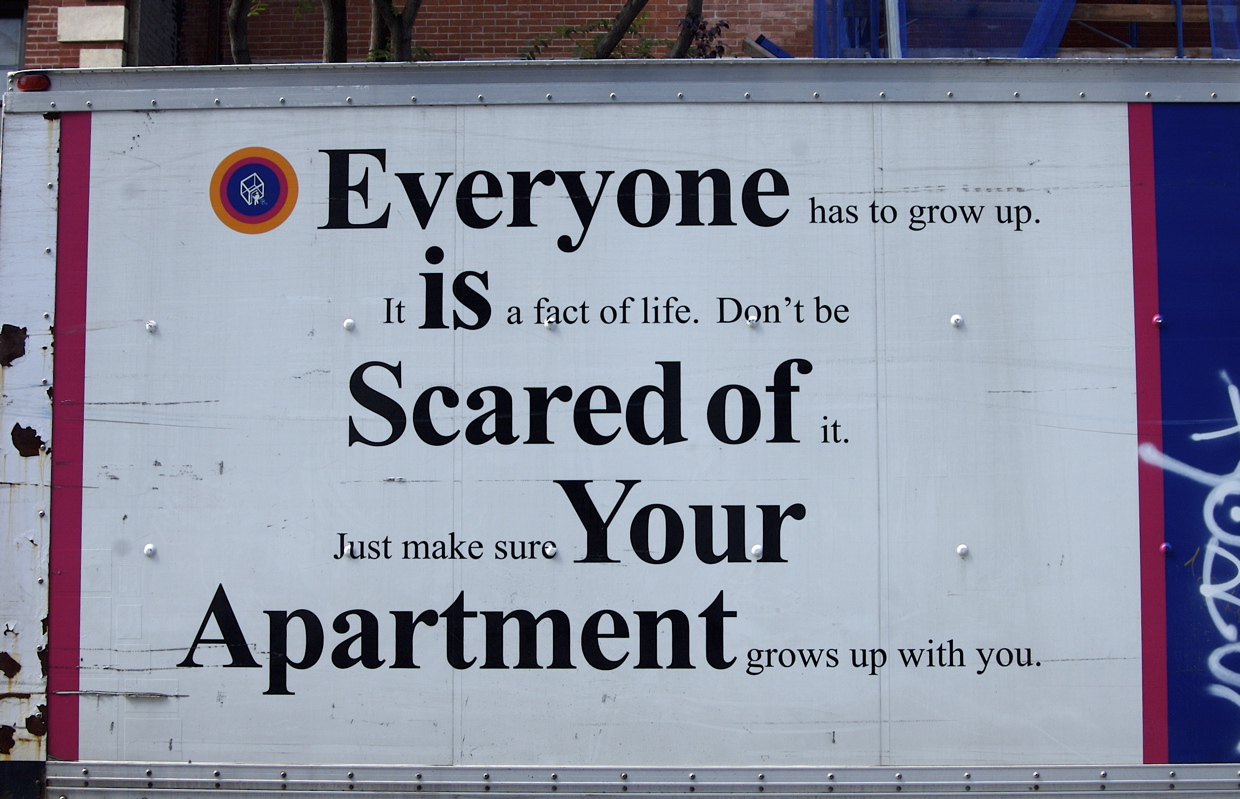Renting in NYC: The Ultimate Guide

What’s normal wear and tear on an apartment? (Source: 12th St David via Flickr Creative Commons)
Let’s face it: Moving is expensive. There’s the broker’s fee, first month’s rent and last month’s rent. Plus, you will need to rent a van and/or pay movers. And you’ll probably be buying some new furniture.
The list builds up fast. The silver lining in the painful and costly process of moving in NYC is that you usually get your security deposit back from your old place, which can then be used to finance your new place. Getting your security deposit back is sort of like finding a thousand bucks in the back pocket of a pair of old jeans, except that instead of blowing it on something fun, you will most likely have to put it toward your next lease.
Why Would a Landlord Withhold Your Security Deposit?
This delicate transition of shuffling funds from one security deposit to the next, however, gets thrown off if and when your landlord withholds your security deposit. While you may like to think that getting your security deposit back means exchanging your keys for a nice, big check, that’s rarely how it works. While some landlords are accommodating and return the security deposit in a fair and timely manner, others do not. Many landlords will ding you for damages that exceed normal wear and tear and retain parts of the security deposit on those grounds, while others may simply withhold it without reason.
What’s Reasonable and What’s Not When It Comes to Withholding Security Deposits?
Both situations are incredibly frustrating and can put you up against a wall if you’re on a tight budget. In truth, there is little you can do to prevent your landlord from withholding your security deposit without reason. But there are measures you can take to prevent your landlord from claiming you left your apartment in a state that exceeds normal wear and tear. Here are some tips.
- Take photos when you move in. Take photos of the state of your apartment when you move in, both of entire rooms as well as minor details. Pay special attention to areas that are likely to get a lot of wear and tear, such doorways, the areas behind doors where the doorknob bangs into the wall, floors, and the area around the kitchen sink. If there is something that looks like a potential liability, document it with a photo and in writing. Make sure your landlord has acknowledged it at the outset of your lease so he doesn’t claim it was your fault when you move out.
- Take photos when you move out. Same deal here. Document everything, especially the self-incriminating stuff. If you notice potential damage, you can be sure that your landlord will, too. It’s better that you have your own documentation of these issues so it’s not the landlord’s word against yours. Their word, most likely, will frame you as more culpable than you actually are. Unless you have your own evidence to refute these claims, the landlord can exaggerate the damage and extract a larger penalty from your security deposit than is warranted.

(Source: Kevin Prichard Photography via Flickr Creative Commons)
What Does ‘Normal Wear and Tear’ Actually Mean?
So you’ve got photos to support you, but what if your landlord claims that the damages you’ve done exceed normal wear and tear and withholds some of your security deposit? What does “normal wear and tear” even mean?
The term is subject to interpretation, but the general rule of thumb is that normal wear and tear includes natural deterioration resulting from typical use over time. It does not cover major things you broke or problems arising from the fact that you ignored an issue that got worse over time. Here’s what counts as normal wear and tear and actual damage.
What Counts as Normal Wear and Tear
- Holes in the wall from hanging pictures
- Walls and ceiling that have been covered with a single coat of paint
- Faded paint or wallpaper
- Chipped paint
- Dirty windows
- Worn countertops
- Lightly scratched floors
- Worn carpet due to aging
- Worn tile or linoleum floors
- Worn hinges or locks
- Worn or dysfunctional electrical sockets
- Dust
What Counts as Damage
Damage means broken things in the apartment:
- Gouges in the wall
- Wallpaper and thick paint coatings that you put up while occupying the apartment
- Broken windows or torn screens
- Curtains or blinds that you took down must be returned when you move or will be considered stolen
- Burns on the countertop
- Stained carpets due to pets, red wine, etc.
- Pervasive pet smells throughout the apartment — if the smell is overwhelming, that’s likely to count as damage.
- Excessive mildew in the bathroom; excessive dirt or grime on the stove or fridge. If you can’t get it off in your pre-move clean, it will likely be deemed damage.
- Broken faucet handles
- Alterations and improvements made to the apartment without your landlord’s consent will likely count as damage. Most leases state that the apartment must be returned to its original state when you vacate. (Your landlord can waive this provision, but you’d need to get his permission in writing.)
Your landlord does not legally have to give you the chance to fix damage, even if you are present during the final walk-through. But if you arrange for it to take place before you hand over the keys, nicer landlords may be willing to negotiate.
Yes, You Should Clean Your Apartment Before Moving
In all cases you should thoroughly clean your apartment before vacating. That means more than just a sweep of the floors and a squirt of Fantastic on the fridge. Think about the state of the apartment when you moved in and the state in which you hope to find your next apartment. You want it clean and sparkly, right? As best you can, try to leave your current place that way. Sure, we hear you, moving is a busy and stressful time and the last thing you want to do after a long day of moving is hang out in your empty apartment cleaning it up for the next guy. But three hours of thorough cleaning can save you unwarranted dings on your security deposit that could translate to hundreds of dollars of withholdings. Landlords can be ruthless. If you don’t have the time or energy, consider hiring a cleaning service. The $100 you invest could save you a lot in the long run.
[This post has been updated and republished.]
—
Hey, why not like StreetEasy on Facebook and follow @streeteasy on Instagram?









